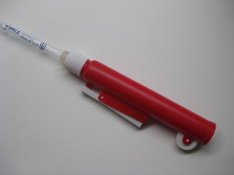Michael A. Covington's website
http://www.covingtoninnovations.com/hc110/index.html explains the difference between the US and the European versions of HC-110. Mr. Covington writes:
Note: In Europe, HC-110 is also sold in 500-mL bottles as a less concentrated syrup which you dilute 1:9 to make dilution B. If you are using that product (Kodak CAT 500 1466), follow the instructions for the European concentrate, not those for the syrup. Although the European type of HC-110 is sold in England, there does not seem to be an English data sheet for it. Full-strength syrup is also sold in Europe so make sure you know which one you have.
You will also find dilution guidelines for the two versions in this article.












